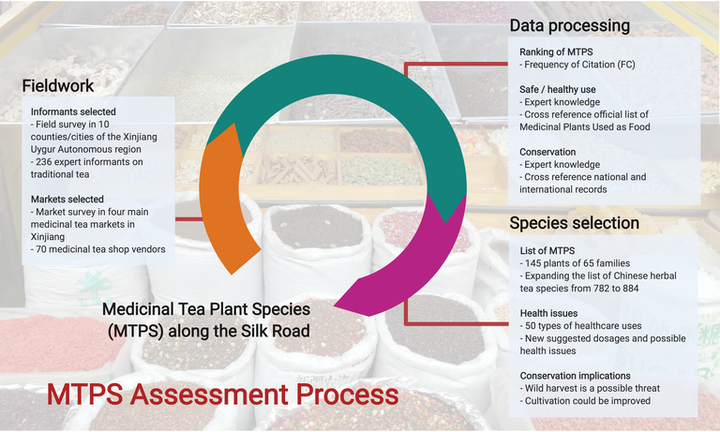Ethnobotany of medicinal tea species in Southern Xinjiang, China

People in Southern Xinjiang, China have been consuming medicinal teas for healthcare since before the ancient Silk Road markets began in the 1st century CE. A recent study by Abdusalam et al. (2020) offers a comprehensive record of the local medical tea plant species and combinations used together with the related traditional knowledge.
The collaborative research project included 236 experts on herbal tea in the Uygur Autonomous region of Xinjiang together with scientists from the Kunming Institute of Botany in Yunnan, Kashi University in Xinjiang and the University of Bonn’s Horticulture Institute.
The authors report a rich diversity of traditional knowledge and active use of medicinal tea plant species. The surveys revealed 145 different plants from 65 families used for making medicinal teas, expanding the list of known Chinese herbal tea species from 782 to 884. Some traditional healthcare uses were supported by pharmaceutical evidence, other reported uses offer new information about potential plant-based medicines. The study also reports on a few potential negative effects on human health and species conservation. They make recommendations for the local and national government to promote sustainable harvest and protect traditional knowledge to ensure that this cultural heritage continues into the future.
Abdusalam, Aysajan, Yu Zhang, Maliyamu Abudoushalamu, Patiguli Maitusun, Cory Whitney, Xue-fei Yang, and Yao Fu. “Documenting the Heritage along the Silk Road: An Ethnobotanical Study of Medicinal Teas Used in Southern Xinjiang, China.” Journal of Ethnopharmacology, May 2020, 113012. https://doi.org/10.1016/j.jep.2020.113012.